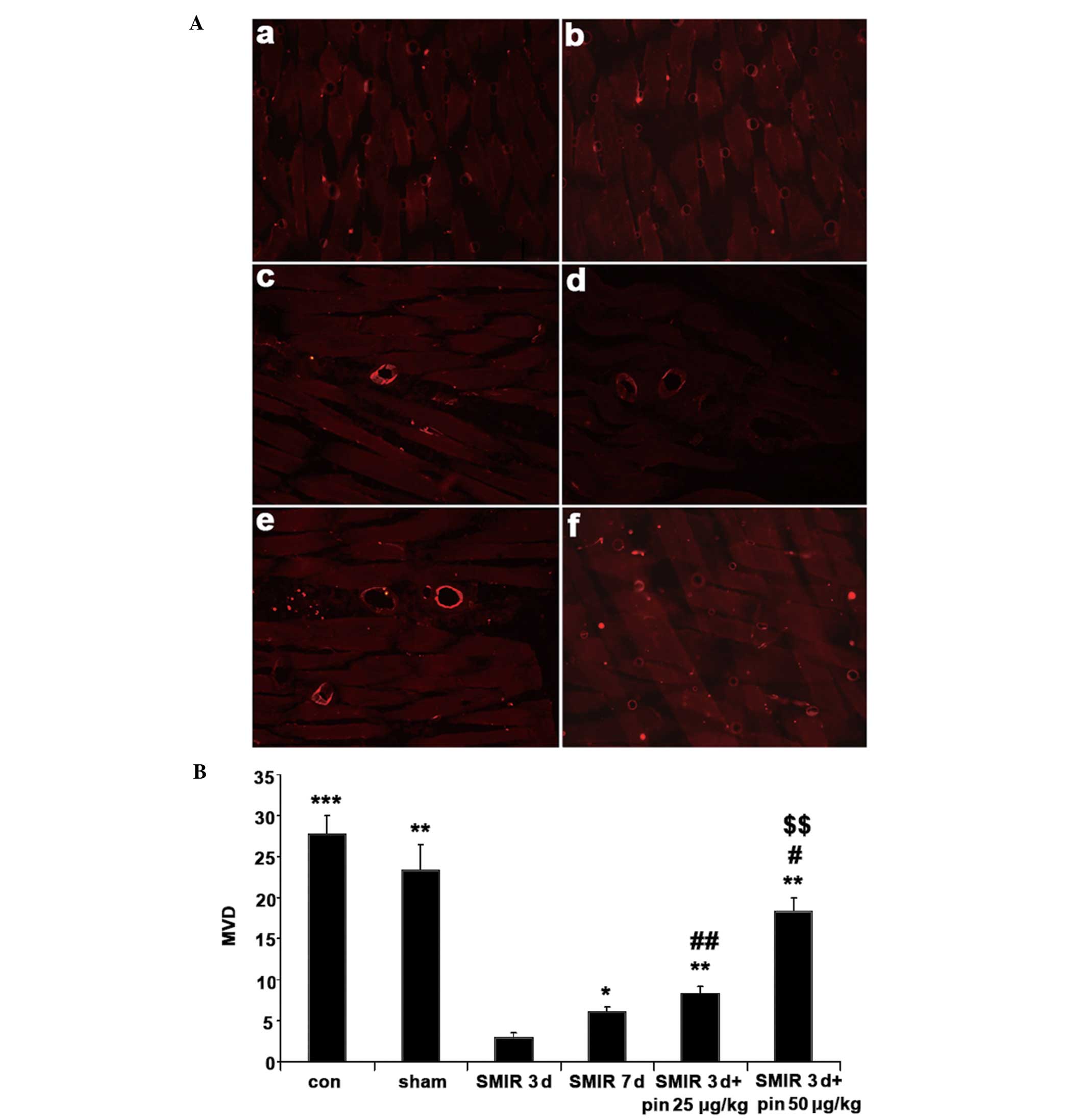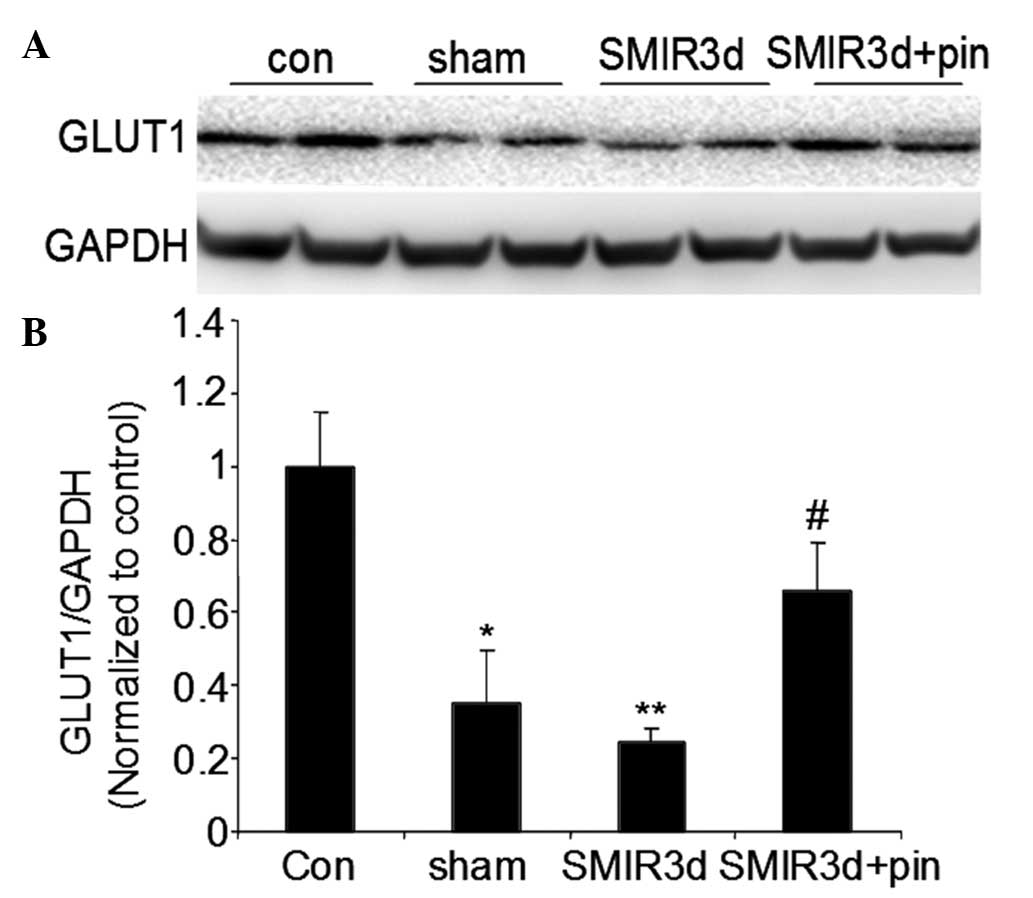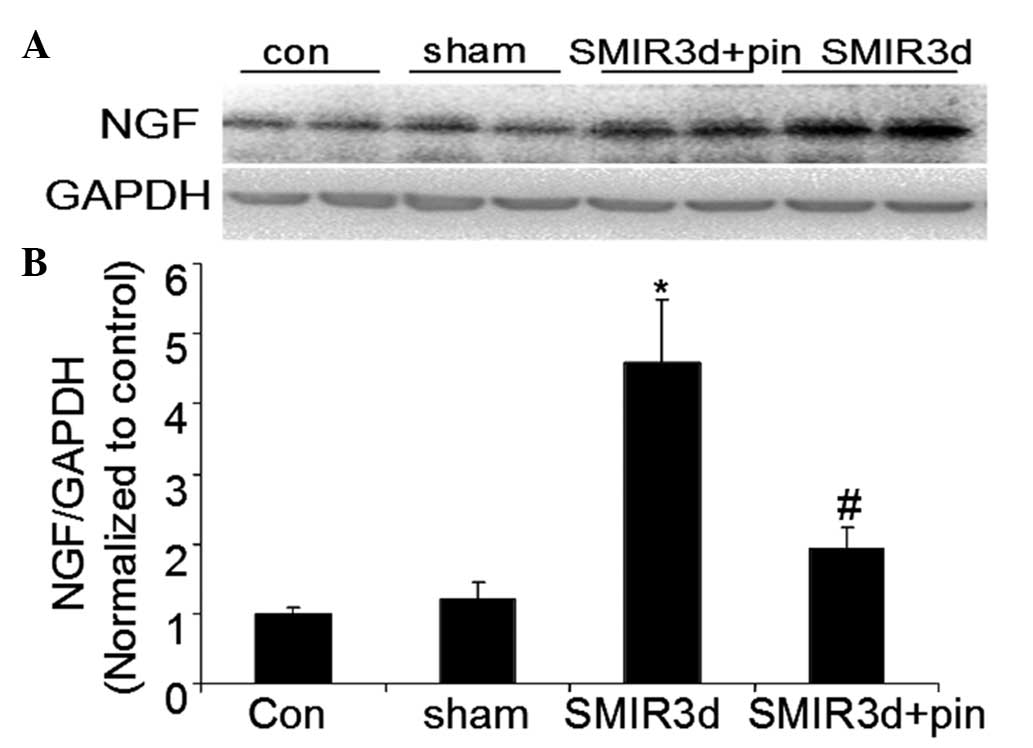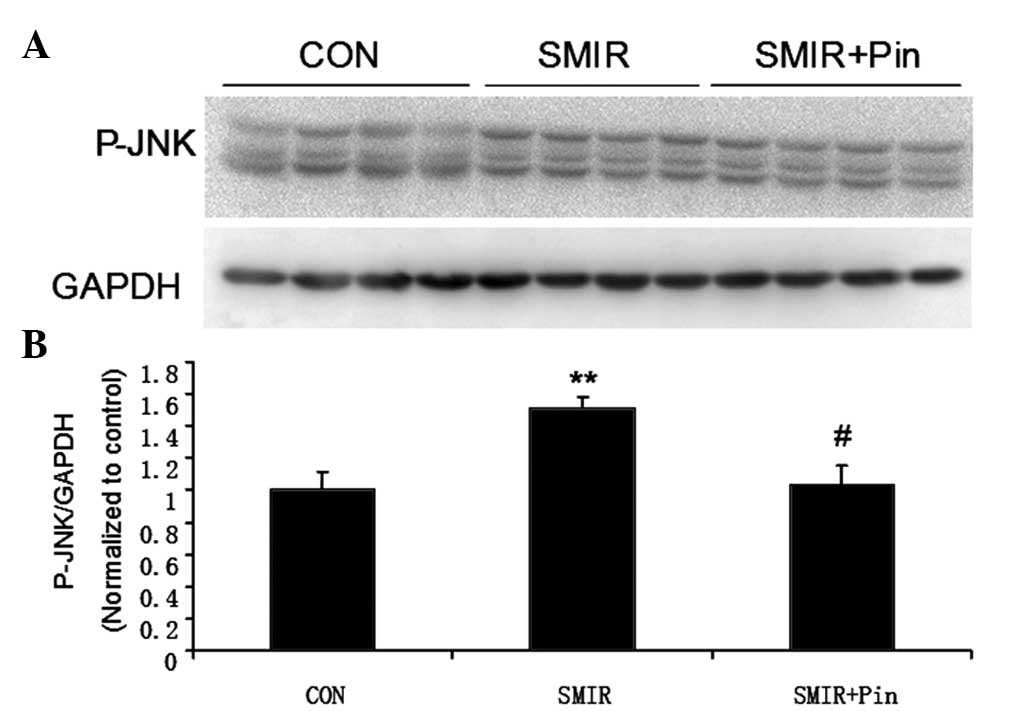|
1
|
Burke S and Shorten GD: When pain after
surgery doesn’t go away…. Biochem Soc Trans. 37:318–322. 2009.
View Article : Google Scholar : PubMed/NCBI
|
|
2
|
Coderre TJ and Bennett GJ: A hypothesis
for the cause of complex regional pain syndrome-type I (reflex
sympathetic dystrophy): pain due to deep-tissue microvascular
pathology. Pain Med. 11:1224–1238. 2010. View Article : Google Scholar : PubMed/NCBI
|
|
3
|
Nesic O, Sundberg LM, Herrera JJ,
Mokkapati VU, Lee J and Narayana PA: Vascular endothelial growth
factor and spinal cord injury pain. J Neurotrauma. 27:1793–1803.
2010. View Article : Google Scholar : PubMed/NCBI
|
|
4
|
Sawayama H, Ishimoto T, Watanabe M, et al:
High expression of glucose transporter 1 on primary lesions of
esophageal squamous cell carcinoma is associated with hematogenous
recurrence. Ann Surg Oncol. 21:1756–1762. 2014. View Article : Google Scholar
|
|
5
|
Bateman RM, Tokunaga C, Kareco T,
Dorscheid DR and Walley KR: Myocardial hypoxia-inducible
HIF-1alpha, VEGF, and GLUT1 gene expression is associated with
microvascular and ICAM-1 heterogeneity during endotoxemia. Am J
Physiol Heart Circ Physiol. 293:H448–H456. 2007. View Article : Google Scholar : PubMed/NCBI
|
|
6
|
Semaan A, Munkarah AR, Arabi H, et al:
Expression of GLUT-1 in epithelial ovarian carcinoma: correlation
with tumor cell proliferation, angiogenesis, survival and ability
to predict optimal cytoreduction. Gynecol Oncol. 121:181–186. 2011.
View Article : Google Scholar
|
|
7
|
Kolar P, Lach S, Gaber T, et al: Effects
of celecoxib on the expression of osteoprotegerin, energy
metabolism and cell viability in cultured human osteoblastic cells.
Clin Exp Rheumatol. 27:99–107. 2009.PubMed/NCBI
|
|
8
|
Bie B, Wang Y, Cai YQ, et al: Upregulation
of nerve growth factor in central amygdala increases sensitivity to
opioid reward. Neuropsychopharmacology. 37:2780–2788. 2012.
View Article : Google Scholar : PubMed/NCBI
|
|
9
|
Zhao J, Seereeram A, Nassar MA, et al:
Nociceptor-derived brain-derived neurotrophic factor regulates
acute and inflammatory but not neuropathic pain. Mol Cell Neurosci.
31:539–548. 2006. View Article : Google Scholar : PubMed/NCBI
|
|
10
|
Lewin GR, Winter J and McMahon SB:
Regulation of afferent connectivity in the adult spinal cord by
nerve growth factor. Eur J Neurosci. 4:700–707. 1992. View Article : Google Scholar : PubMed/NCBI
|
|
11
|
Priyanka HP, Bala P, Ankisettipalle S and
ThyagaRajan S: Bacopa monnieri and L-deprenyl differentially
enhance the activities of antioxidant enzymes and the expression of
tyrosine hydroxylase and nerve growth factor via ERK 1/2 and NF-κB
pathways in the spleen of female wistar rats. Neurochem Res.
38:141–152. 2013. View Article : Google Scholar
|
|
12
|
Fukui Y, Ohtori S, Yamashita M, et al: Low
affinity NGF receptor (p75 neurotrophin receptor) inhibitory
antibody reduces pain behavior and CGRP expression in DRG in the
mouse sciatic nerve crush model. J Orthop Res. 28:279–283.
2010.
|
|
13
|
Gao YJ, Xu ZZ, Liu YC, Wen YR, Decosterd I
and Ji RR: The c-Jun N-terminal kinase 1 (JNK1) in spinal
astrocytes is required for the maintenance of bilateral mechanical
allodynia under a persistent inflammatory pain condition. Pain.
148:309–319. 2010. View Article : Google Scholar :
|
|
14
|
Manassero G, Repetto IE, Cobianchi S, et
al: Role of JNK isoforms in the development of neuropathic pain
following sciatic nerve transection in the mouse. Mol Pain.
8:392012. View Article : Google Scholar : PubMed/NCBI
|
|
15
|
Zoga V, Kawano T, Liang MY, et al: KATP
channel subunits in rat dorsal root ganglia: alterations by painful
axotomy. Mol Pain. 6:62010. View Article : Google Scholar : PubMed/NCBI
|
|
16
|
Perimal EK, Akhtar MN, Mohamad AS, et al:
Zerumbone-induced antinociception: involvement of the
L-arginine-nitric oxide-cGMP-PKC-K+ ATP channel pathways. Basic
Clin Pharmacol Toxicol. 108:155–162. 2011. View Article : Google Scholar
|
|
17
|
Du X, Wang C and Zhang H: Activation of
ATP-sensitive potassium channels antagonize nociceptive behavior
and hyperexcitability of DRG neurons from rats. Mol Pain. 7:352011.
View Article : Google Scholar : PubMed/NCBI
|
|
18
|
Xia H, Zhang D, Yang S, et al: Role of
ATP-sensitive potassium channels in modulating nociception in rat
model of bone cancer pain. Brain Res. 1554:29–35. 2014. View Article : Google Scholar : PubMed/NCBI
|
|
19
|
Romero TR, Guzzo LS, Perez AC, Klein A and
Duarte ID: Noradrenaline activates the NO/cGMP/ATP-sensitive K(+)
channels pathway to induce peripheral antinociception in rats.
Nitric Oxide. 26:157–161. 2012. View Article : Google Scholar : PubMed/NCBI
|
|
20
|
Flatters SJ: Characterization of a model
of persistent postoperative pain evoked by skin/muscle incision and
retraction (SMIR). Pain. 135:119–130. 2008. View Article : Google Scholar
|
|
21
|
Dixon WJ: Staircase bioassay: the
up-and-down method. Neurosci Biobehav Rev. 15:47–50. 1991.
View Article : Google Scholar : PubMed/NCBI
|
|
22
|
Weidner N, Semple JP, Welch WR and Folkman
J: Tumor angio-genesis and metastasis - correlation in invasive
breast carcinoma. N Engl J Med. 324:1–8. 1991. View Article : Google Scholar : PubMed/NCBI
|
|
23
|
Memis A, Ozden C, Ozdal OL, Guzel O, Han O
and Seckin S: Effect of finasteride treatment on suburethral
prostatic microvessel density in patients with hematuria related to
benign prostate hyperplasia. Urol Int. 80:177–180. 2008. View Article : Google Scholar : PubMed/NCBI
|
|
24
|
Brennan TJ, Zahn PK and Pogatzki-Zahn EM:
Mechanisms of incisional pain. Anesthesiol. Clin North America.
23:1–20. 2005.
|
|
25
|
Pogatzki-Zahn EM, Zahn PK and Brennan TJ:
Postoperative pain - clinical implications of basic research. Best
Pract Res Clin Anaesthesiol. 21:3–13. 2007. View Article : Google Scholar : PubMed/NCBI
|
|
26
|
de Mos M, Laferrière A, Millecamps M, et
al: Role of NFkappaB in an animal model of complex regional pain
syndrome-type I (CRPS-I). J Pain. 10:1161–1169. 2009. View Article : Google Scholar : PubMed/NCBI
|
|
27
|
Freund-Michel V and Frossard N: The nerve
growth factor and its receptors in airway inflammatory diseases.
Pharmacol Ther. 117:52–76. 2008. View Article : Google Scholar
|
|
28
|
Mousa SA, Cheppudira BP, Shaqura M, et al:
Nerve growth factor governs the enhanced ability of opioids to
suppress inflammatory pain. Brain. 130:502–513. 2007. View Article : Google Scholar
|
|
29
|
Ansari N, Khodagholi F, Amini M and
Shaerzadeh F: Attenuation of LPS-induced apoptosis in
NGF-differentiated PC12 cells via NF-κB pathway and regulation of
cellular redox status by an oxazine derivative. Biochimie.
93:899–908. 2011. View Article : Google Scholar : PubMed/NCBI
|
|
30
|
Wang H, Long C, Duan Z, Shi C, Jia G and
Zhang Y: A new ATP-sensitive potassium channel opener protects
endothelial function in cultured aortic endothelial cells.
Cardiovasc Res. 73:497–503. 2007. View Article : Google Scholar
|
|
31
|
Minamino T and Hori M: Protecting
endothelial function: A novel therapeutic target of ATP-sensitive
potassium channel openers. Cardiovasc Res. 73:448–449. 2007.
View Article : Google Scholar
|
|
32
|
Shi W, Cui N, Wu Z, et al:
Lipopolysaccharides up-regulate Kir6.1/SUR2B channel expression and
enhance vascular KATP channel activity via NF-kappaB-dependent
signaling. J Biol Chem. 285:3021–3029. 2010. View Article : Google Scholar :
|
|
33
|
Fan LH, Tian HY, Wang J, et al:
Downregulation of Kir6.1/SUR2B channels in the obese rat aorta.
Nutrition. 25:359–363. 2009. View Article : Google Scholar
|














